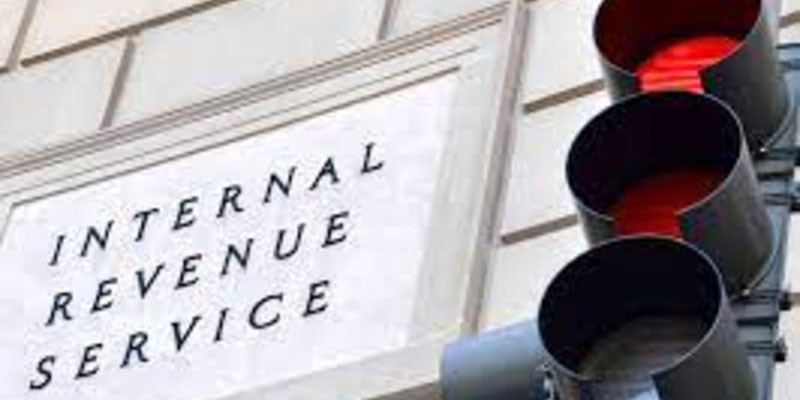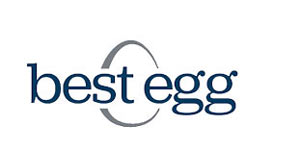A Closer Look at Form 8606 and its Implications
Dec 02, 2024 By Rick Novak
Form 8606 is a crucial document for taxpayers contributing to Individual Retirement Arrangements (IRAs). This form plays a significant role in ensuring that taxpayers correctly report various transactions related to their IRAs. In this guide, we'll explore the purpose of Form 8606, its multiple uses, and its importance in tax reporting.
Taxpayers use Form 8606 to report specific transactions related to IRAs. The IRS calls these accounts "Individual Retirement Arrangements," but most people call them IRAs. These accounts encourage retirement savings and investing with tax incentives.
Different Types of IRAs
When planning for retirement, it's essential to know the various Individual Retirement Arrangements (IRAs) available. Each IRA type offers distinct advantages, and understanding these can help make informed decisions. Let's explore the different IRAs and their features.
Traditional IRA
A Traditional IRA is a popular choice for many individuals. When you contribute to this IRA, you might qualify for a tax deduction. The money inside the account grows without the burden of taxes. But remember, when it's time to pull out the funds during retirement, the taxman will want his share. You'll owe income taxes on the earnings and any contributions you previously deducted.
Roth IRA
The Roth IRA flips the tax script. The tax break is when you withdraw, not when you put in. You donate taxed money. Roth IRA earnings grow tax-free, which is excellent. If certain conditions are met, retirement withdrawals are tax-free.
SEP-IRA
The SEP-IRA targets freelancers and small business owners. It works like a Traditional IRA but allows higher contributions. The primary contributor here is the employer. If you're a business owner looking to provide retirement benefits to your employees or even yourself, the SEP-IRA is a worthy consideration.
SIMPLE IRA
The Savings Incentive Match Plan for Employees (SIMPLE) IRA is designed for small businesses. It's a way for employers to offer retirement benefits without the administrative complexities of more extensive plans. Both employees and employers contribute to the SIMPLE IRA. Employees choose how much to contribute, and employers must match or non-electively contribute.
Deductibility of Traditional IRAs

Traditional IRAs are popular retirement savings options. Tax benefits are a significant reason. Traditional IRA contributions in 2023 must follow specific rules.
Contributions are generally deductible up to $6,500 per year. The bonus and limit increase to $7,500 for 50+. Now, the tricky part. If your employer offers a 401K, deductions may change. Everything depends on income.
Breaking it down below:
- If you're single and have a retirement plan option at work, but your income goes above $73,000, you won't get the full deduction. You'll only get a partial one.
- For married folks who file their taxes together and have a retirement plan at their job, the threshold is $116,000.Again, a partial deduction applies if your combined income exceeds that.
- Singles with workplace retirement plans and incomes over $83,000 won't be deducted. Married couples filing jointly have a $139,000 threshold.
Why Form 8606 Matters When Reporting Nondeductible Contributions
Nondeductible contributions are another critical aspect of IRAs. Imagine you contribute to a traditional IRA but don't deduct it at tax time. We call this a "nondeductible contribution." Even without a tax break, you must report these contributions. Tax form 8606 helps here.
Why bother with form 8606 instructions? It's about avoiding overpaying taxes in the long run. Reporting these contributions on tax form 8606 tells the IRS, "Hey, I've already paid tax on this money." Thus, you won't be taxed on IRA contributions when you withdraw money later. Form 8606 protects you from double taxation.
Other Uses of Form 8606
Form 8606 serves multiple purposes beyond just documenting nondeductible contributions. It's a versatile document that plays a central role in various IRA-related transactions. Let's explore these functions in detail.
Reporting Distributions from a Roth IRA
When you withdraw money from a Roth IRA, Form 8606 comes into play. This form helps taxpayers accurately report the amount they've taken out. Remember, Roth IRAs are unique because you contribute post-tax dollars, which means that, under qualifying circumstances, you can withdraw your earnings tax-free. Using Form 8606 ensures you're correctly documenting these distributions and not overpaying on your taxes.
Reporting Distributions After Nondeductible Contributions
If you've made nondeductible contributions to any IRA, it's essential to keep track of these amounts. Why? Because when you start taking distributions, a portion of this money shouldn't be taxed again. Form 8606 assists in this process, ensuring you're not double-taxed on amounts you've already paid tax.
Converting Traditional, SEP, or SIMPLE IRA into a Roth IRA
Considering a Roth conversion? Form 8606 is your go-to document. When you convert a traditional, SEP, or SIMPLE IRA into a Roth IRA, you pay taxes now rather than later. Form 8606 helps in reporting this conversion, ensuring that the IRS is aware of the taxable amount of the conversion.
Form 8606 Instructions and Filing

Understanding the intricacies of tax form 8606 can seem daunting. However, with the proper guidance and a clear understanding of form 8606 instructions, the process becomes more manageable. Let's break down the steps and the importance of accurate filing.
Importance of Following Form 8606 Instructions
Accuracy is paramount when dealing with tax documents. The form 8606 instructions are designed to guide taxpayers through correctly reporting their IRA transactions. By adhering to these guidelines, you reduce the risk of errors, which can lead to penalties or an inflated tax bill.
Potential Pitfalls and Mistakes
It's easy to overlook details or misunderstand certain aspects of tax form 8606. Common mistakes include incorrectly reporting amounts, failing to document conversions, or missing out on writing nondeductible contributions. These errors can have financial implications, so it's crucial to double-check your entries against the form 8606 instructions.
Step-by-Step Guidance
The form 8606 instructions offer a detailed roadmap for taxpayers. From defining terms to providing line-by-line guidance, these instructions are a valuable resource. Whether you're a seasoned tax pro or a novice, taking the time to review and follow the form 8606 instructions can save you time, stress, and potentially money.

How To Pay Taxes If You're Overseas

How to Avoid Penalty on Premature Withdrawal of Fixed Deposit?

Unitranche Debt: An Overview

The Complete Guide to Form 6251: Alternative Minimum Tax-Individuals

What Is a Non-Qualified Stock Option (NSO)?

Best Egg Personal Loans Review

Nelnet Student Loan Servicing Review

Medical vs. Financial Power of Attorney: What You Need to

Essential Credit Cards for the Global Traveler

